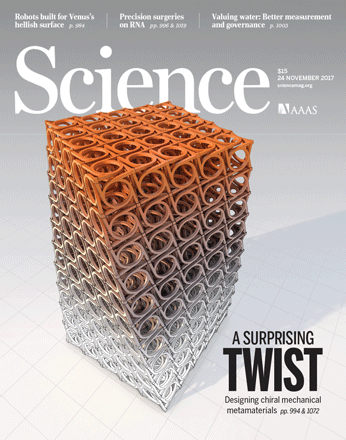
Sometimes scientific findings can be too hot to handle. Literally.
A team of researchers in India and Japan who reported breakthrough results in two papers about electromagnetics, including an article in Science, are retracting the articles because the exciting data resulted from experimental error. To be precise: unbeknownst to them, inadvertent heating of their samples had contaminated their data.
The first author of both articles is Chanchal Sow, of the Indian Institute of Technology in Kanpur. The last author on both is Yoshiteru Maeno, a professor of physics at Kyoto University.
Here’s the notice:
After the publication of our Research Article “Current-induced strong diamagnetism in the Mott insulator Ca2RuO4” (1), new measurements performed in Kyoto by Giordano Mattoni et al. (2) revealed a serious technical artifact that affected our published data. Specifically, it became clear that a large part of the reported diamagnetic signal arose from a mechanism that we did not anticipate. This signal is attributable to localized heating of the sample holder, caused by the unavoidable Joule heating in the sample.
The published data in Figs. 1A, 1C, and 2B are affected by this artifact. The theoretical model of Fig. 3 remains valid, as it deals with the generic case in which a Mott gap is suppressed. Because the artifact affects the main experimental data, the authors unanimously agreed to retract the Research Article. For the same reason, another work on Ca3(Ru1−xTix)2O7 by some of the present authors published in Physical Review Letters (3) is also being retracted (4).
Chanchal Sow1, Shingo Yonezawa1, Sota Kitamura2,3, Takashi Oka3,4, Kazuhiko Kuroki5,Fumihiko Nakamura6, Yoshiteru Maeno1
The second paper, “In situ control of diamagnetism with current in Ca3(Ru1−xTix)2O7,” included Sow and Yonezawa and Maeno among the authors. The notice reads:
Following the publication of the Letter, new measurements performed in Kyoto by Mattoni, Yonezawa, and Maeno [1] led to reveal a serious technical artefact that affected our published data. In particular, it became clear that a large part of the reported diamagnetic signal was arising from a mechanism that we did not anticipate. This signal can be understood as due to localized heating of the sample holder, caused by the unavoidable Joule heating in the sample.
Because the artefact affects the main experimental data, the authors unanimously agreed to retract the Letter. For the same reason, previous work on Ca2 RuO4 [2] has also been retracted [3]. We are profoundly sorry for having overlooked this aspect, and we explain the details of this rather unexpected phenomenon in Ref. [1].
Maeno told us:
Our group ourselves found artefact in our previous measurements ourselves and made a detailed analysis of the effect.
The origin of the artefact would have been very difficult to anticipate by any other researchers.
It was not a kind of careless mistake by an inexperienced investigator.
We describe the detailed analysis of the artefact in the following paper:
Mattoni, Yonezawa, Maeno, arXiv:2004.04570; to appear in Appl. Phys. Lett. (2020).
The preprint is “Diamagnetic-like response from localised heating of a paramagnetic material,” which the group submitted earlier this month.
Here’s the abstract, which is the academic equivalent of turning lemons into lemonade:
In the search of material properties out-of-equilibrium, the non-equilibrium steady states induced by electric current are an appealing research direction where unconventional states may emerge. However, the unavoidable Joule heating caused by flowing current calls for the development of new measurement protocols, with a particular attention to the physical properties of the background materials involved. Here, we demonstrate that localised heating can give rise to a large, spurious diamagnetic-like signal. This occurs due to the local reduction of the background magnetisation caused by the heated sample, provided that the background material has a Curie-like susceptibility. Our experimental results, along with numerical calculations, constitute an important building block for performing accurate magnetic measurements under the flow of electric current.
Maeno said his group is:
in the process of retaking the data in an improved experimental setup.
This case reminds us a little of the group that lost six papers (so far) for what appears to have been a rookie mistake in lab hygiene.
Like Retraction Watch? You can make a tax-deductible contribution to support our work, follow us on Twitter, like us on Facebook, add us to your RSS reader, or subscribe to our daily digest. If you find a retraction that’s not in our database, you can let us know here. For comments or feedback, email us at [email protected].
I think you should tag this with “Doing the right thing”.
I agree with Mary. This doesn’t look at all like a “rookie mistake” in hygiene and that must be pretty insulting to the authors.
I have seen other articles on this site praising senior authors who retract after recognizing (what I consider to be) fairly elementary data analysis mistakes that could have been caught if multiple people with the right expertise had analyzed the data set.
In this case, it sounds as though it is only the interpretation that turns out to be wrong after recognizing an unforeseen additional model parameter.
So then the authors do the entire scientific community a favor and rigorously track down this issue and publish again. And it seems all you have for them is condescending jokes?
Disclaimer: I do not know the authors and am still a big fan of this site.
In olden times, it was known to physics undergraduates that
1. Temperature affects magnetic properties.
2. Joule’s first law, (1840) also known as the Joule–Lenz law, states that the power of heating generated by an electrical conductor is proportional to the product of its resistance and the square of the current: P = IIR.
Today, it is understood that the publication of groundbreaking research papers in physics must never be hampered by a consideration of basic physical laws.